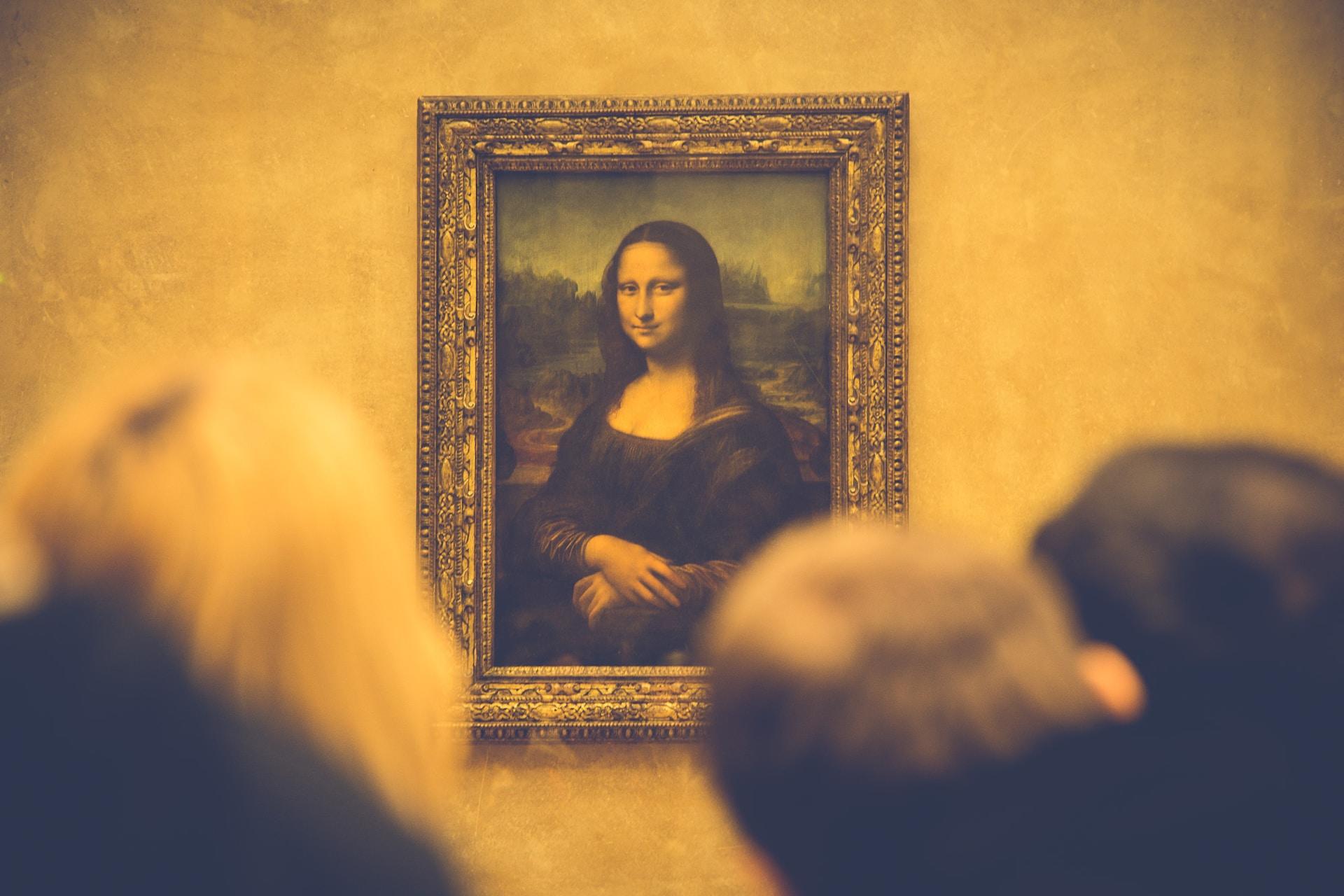Among the countless people, living or dead, that we could meet, Leonardo da Vinci stands out as one of the most fascinating choices. Renowned for his immense talent and intellectual curiosity, he was a true polymath. Da Vinci designed machines centuries ahead of their time and made significant contributions to science, mathematics, astronomy, cartography, and anatomy, as exemplified by his Vitruvian Man.
In addition to his scientific and engineering achievements, da Vinci was a remarkable artist, creating numerous paintings, drawings, and even sculptures—though only one sculpture has survived to this day. Let’s explore da Vinci’s top 10 paintings and discover the brilliance of his artistic legacy!

Ginevra de' Benci
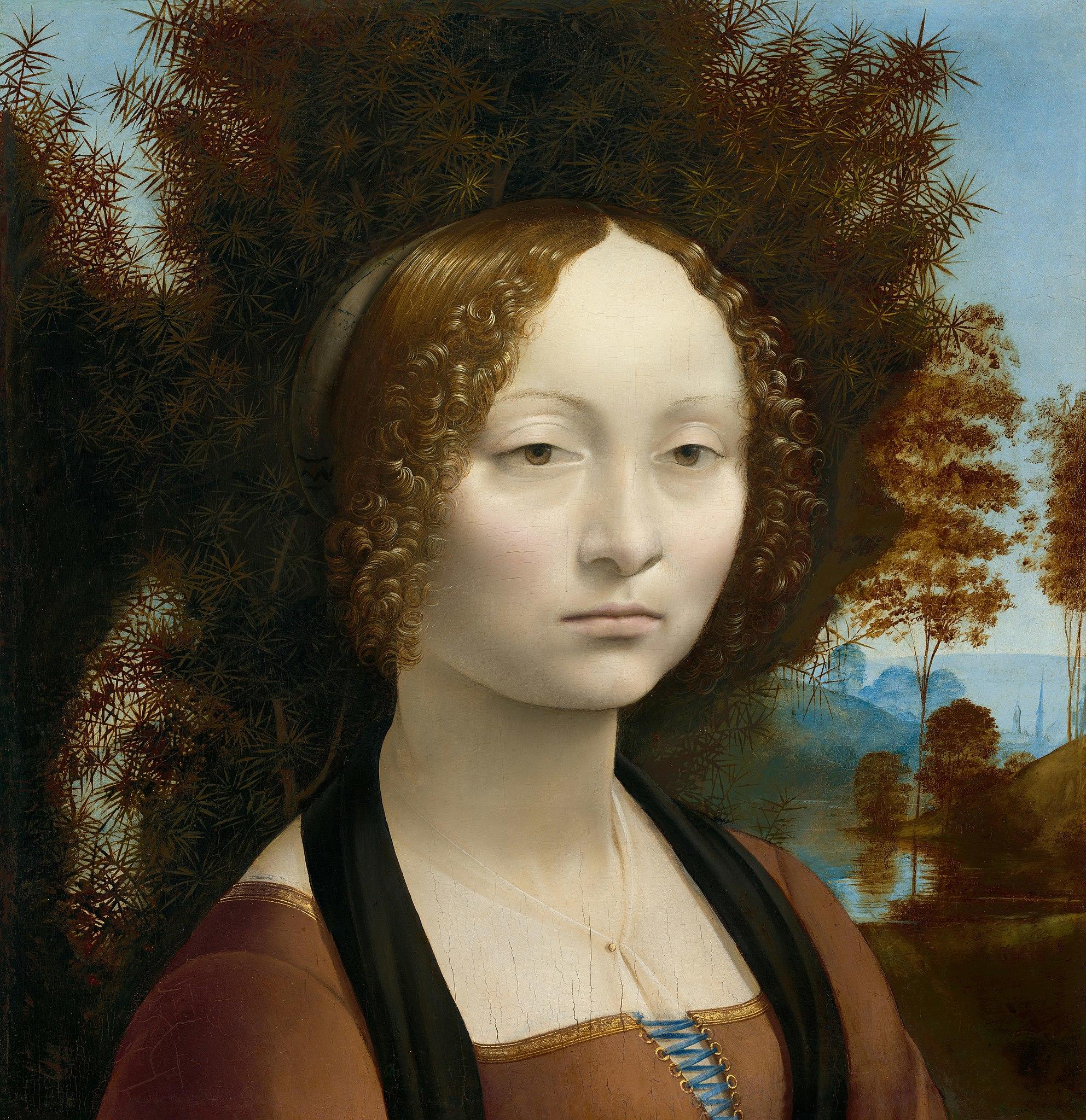
Ginevra de' Benci is one of Leonardo da Vinci's early portraits from when he was still in Florence. It's a painting of a young woman and like his other portraits, is incredibly detailed and uses the sfumato (smoky) technique that we see in a lot of other Leonardo da Vinci artwork, like the Mona Lisa.
Even this early in his artistic career he was revolutionary; by painting the sitter in a three-quarter perspective (rather than half-face or silhouette perspective) he set a new precedent for Renaissance portraiture.
Much like many of da Vinci's other paintings, the detail has allowed historians to learn about the Renaissance period and aspects of culture in the Italian city-states of the time.
Learn about painting techniques with painting classes Brisbane on Superprof.
Virgin of the Rocks (Italian: Vergine delle rocce)
Sometimes called Madonna of the Rocks, the versions housed in the Louvre and the London National Gallery are universally accepted to be da Vinci originals. The Louvre version is unrestored, while the London version received restoration treatment in 2008-2010. It’s unknown exactly which version came first, and their dates are estimated.
There are a few differences in the compositions of the two, most notably in the posture of the angel, Uriel, who sits on the right-hand side next to the child Jesus.
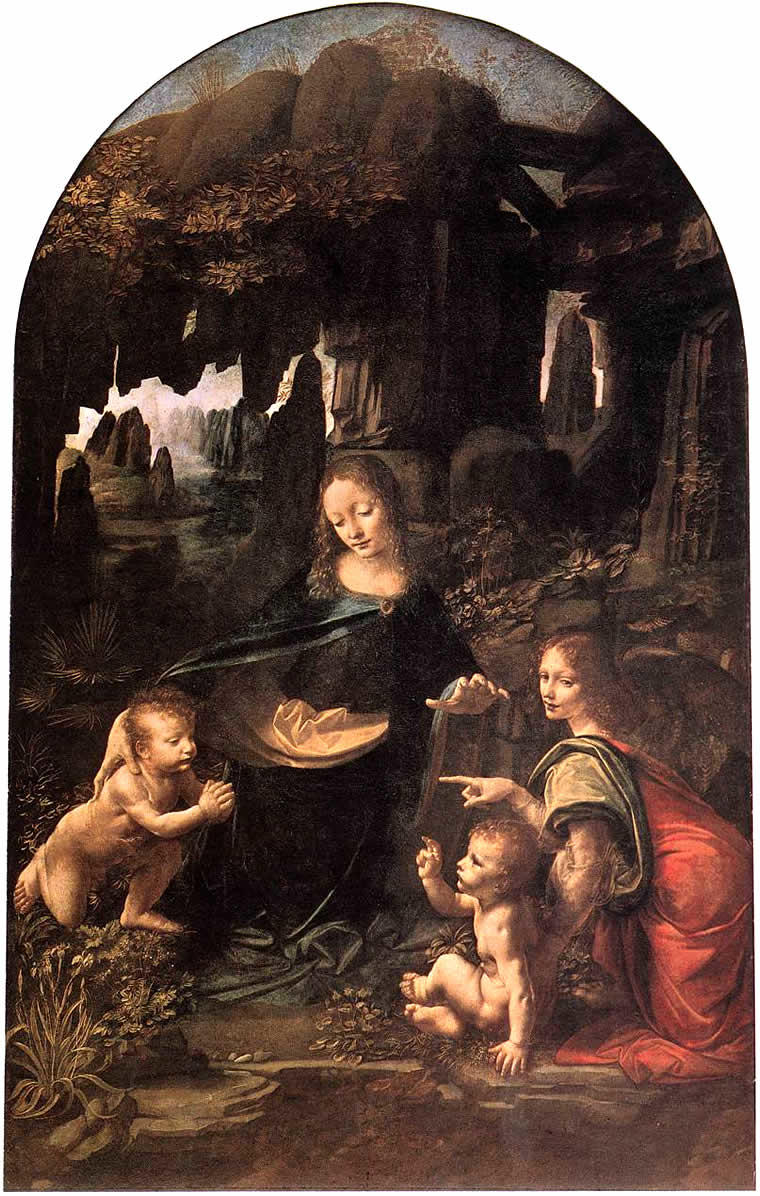
The other child in the painting is child John the Baptist. The colours are also notably different between the two paintings.
It’s also thought that at least some of the London version was painted by at least one of da Vinci’s students.
Lady with an Ermine (Italian: Dama con l'ermellino)
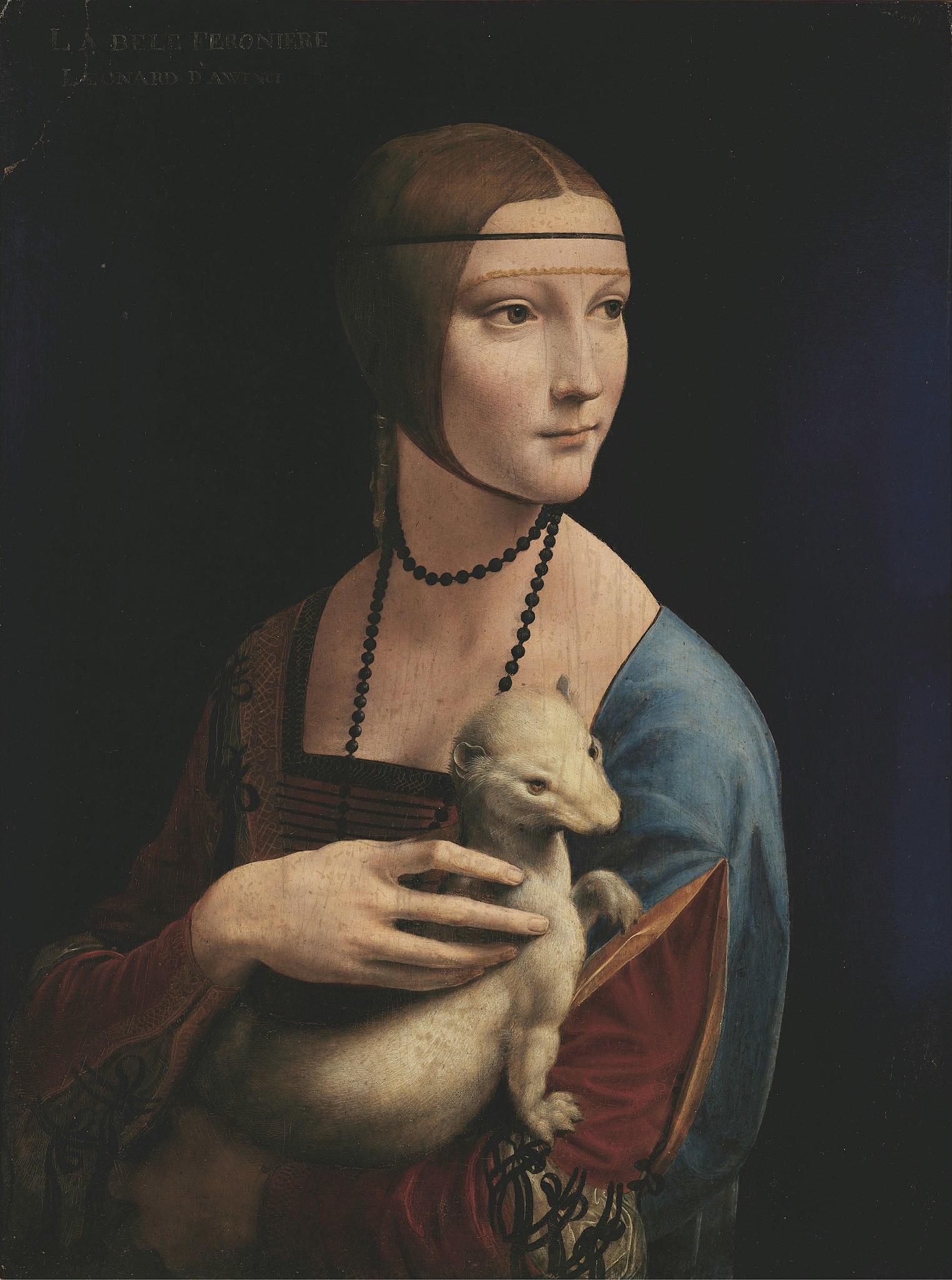
Lady with an Ermine is one of da Vinci's earlier works but the attention to detail that the artist was famous for is still present. When many artists typically painted portraits with subjects in a formal pose, Leonardo broke with convention by having the subject pose in a more dynamic way with the ermine on her shoulder.
This painting is another example of Leonardo da Vinci's sfumato technique in portrait art and while Lady with an Ermine isn't as famous as da Vinci's most famous portrait, The Mona Lisa, it's still culturally significant and recognisable.
The Last Supper (Italian: Il Cenacolo, L'Ultima Cena)
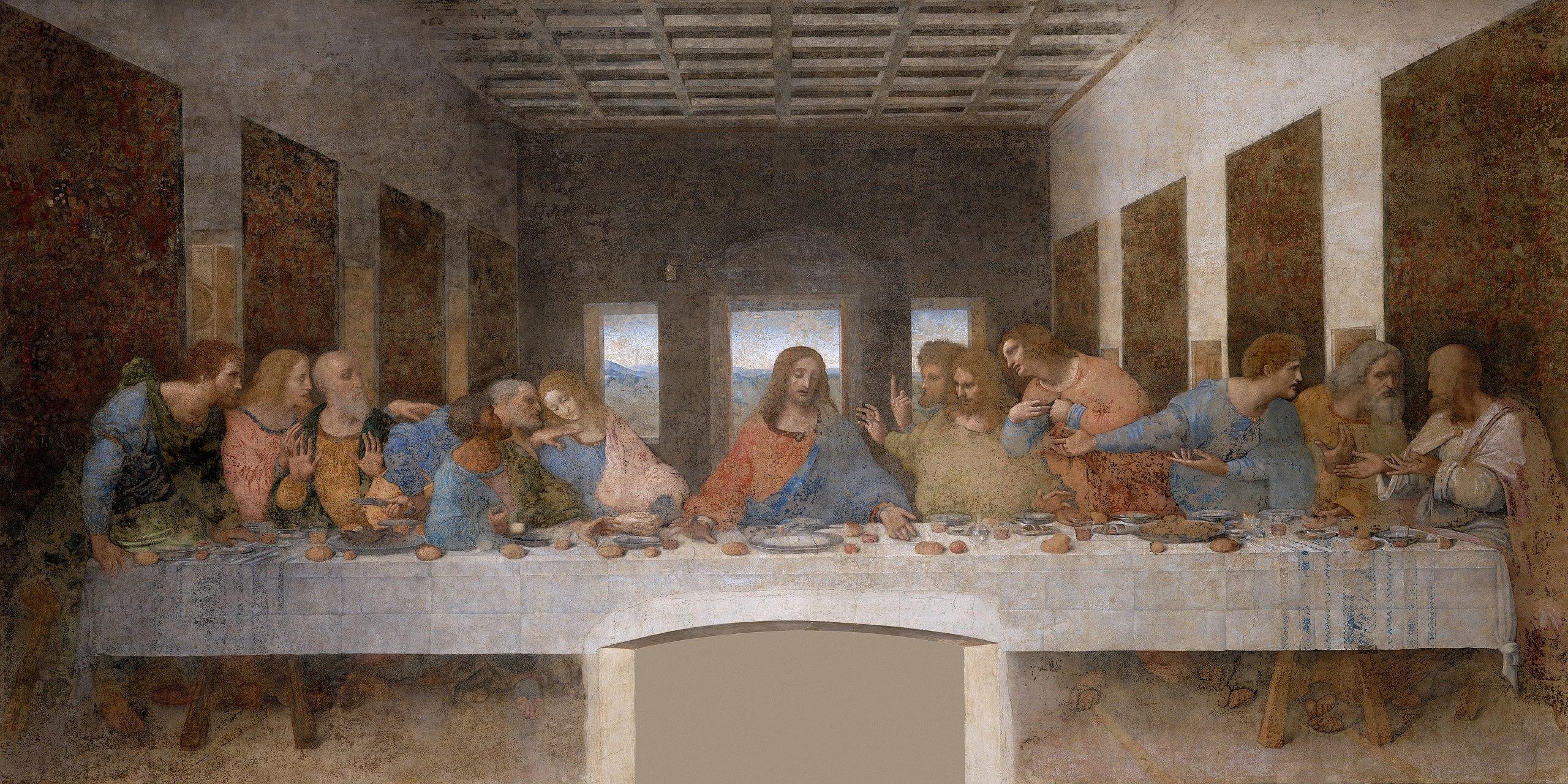
The Last Supper is one of the most famous paintings in the world. It’s hugely important both for its subject matter and the techniques da Vinci used to create it.
Firstly, the painting, as the name suggests, is of "The Last Supper", the final meal of Jesus before his crucifixion. For Christians, it's a very significant piece.
Artistically, the painting uses tempera and oil paint on a dry wall rather than using the traditional fresco techniques common at the time. Leonardo da Vinci's choice of technique also allowed him to paint unique reactions on the faces of each of Jesus' disciples.
Learn more about art history and practise your skills with painting classes Sydney here on Superprof.

Sala delle Asse
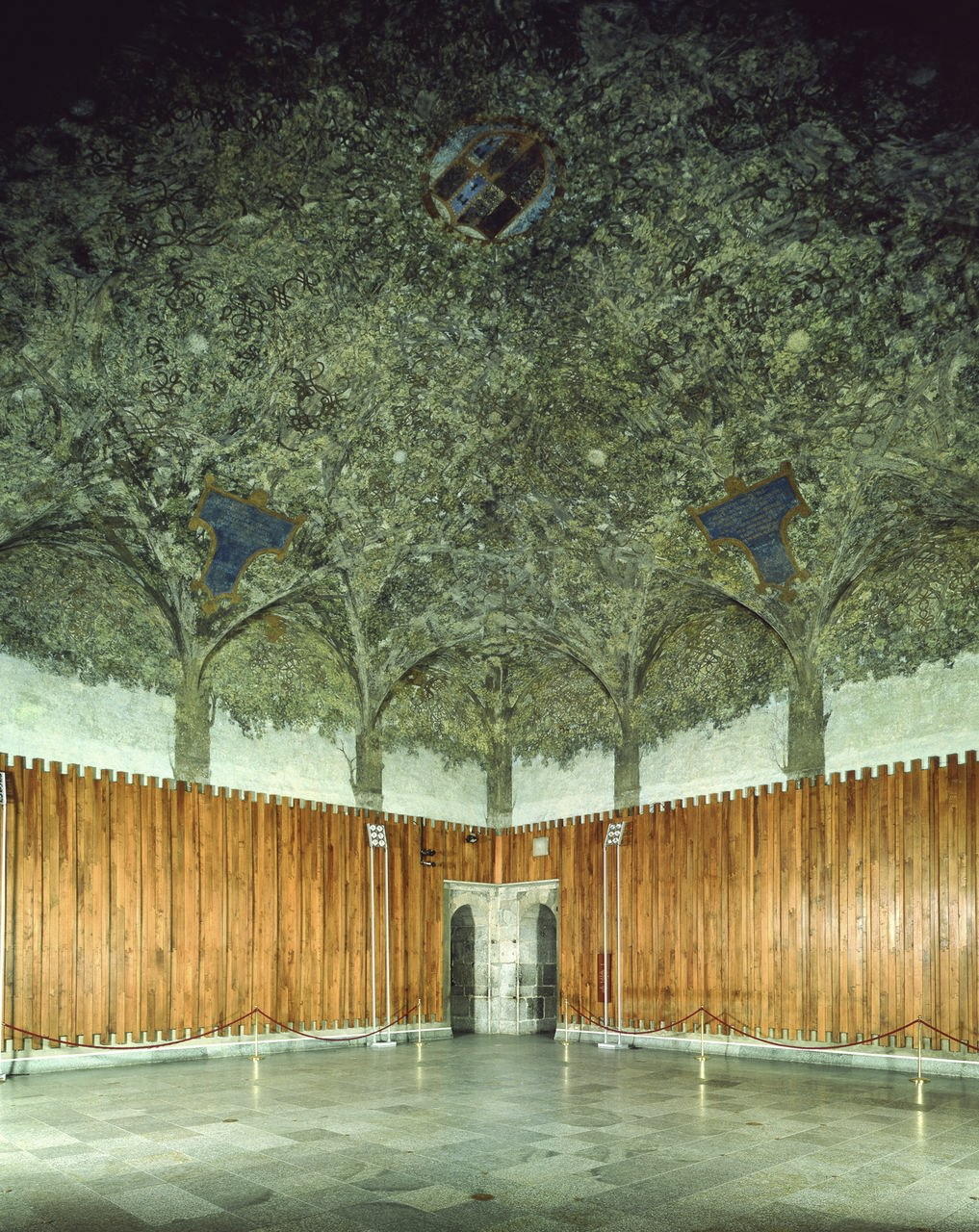
While working for the Duke of Milan, Ludovico Sforza, da Vinci was commissioned to paint “The Room of the Wooden Boards” in the castle. It is a trompe-l'œil, an artistic technique that immerses the viewer in art from all angles.
The room is painted as if one is inside a mulberry grove, with beautiful green canopies overhead. Unfortunately, da Vinci never finished this work, either because he was notorious for not finishing or because the castle was conquered by the French in 1499.
As a result, the walls contain preliminary sketches rather than finished paintings.
When the French took over, they painted over the mural. In 1893, the first restoration of the castle revealed the underlying mural. Ongoing restorations all the way to 2018 have revealed more of the mural bit by bit, and the colour restoration has also been changed a few times.
Salvator Mundi
It’s agreed upon by most art historians that the version of Salvator Mundi (Latin meaning “Savior of the World”) that was in the 2011-2012 National Gallery show in London is the original copy. There are many copies of this particular painting in the world, all made by da Vinci’s students learning to paint by copying a masterpiece.
This particular painting exhibits many of the most distinct features of the most famous Leonardo da Vinci paintings, like the sfumato and the details of the hair and draped clothing.
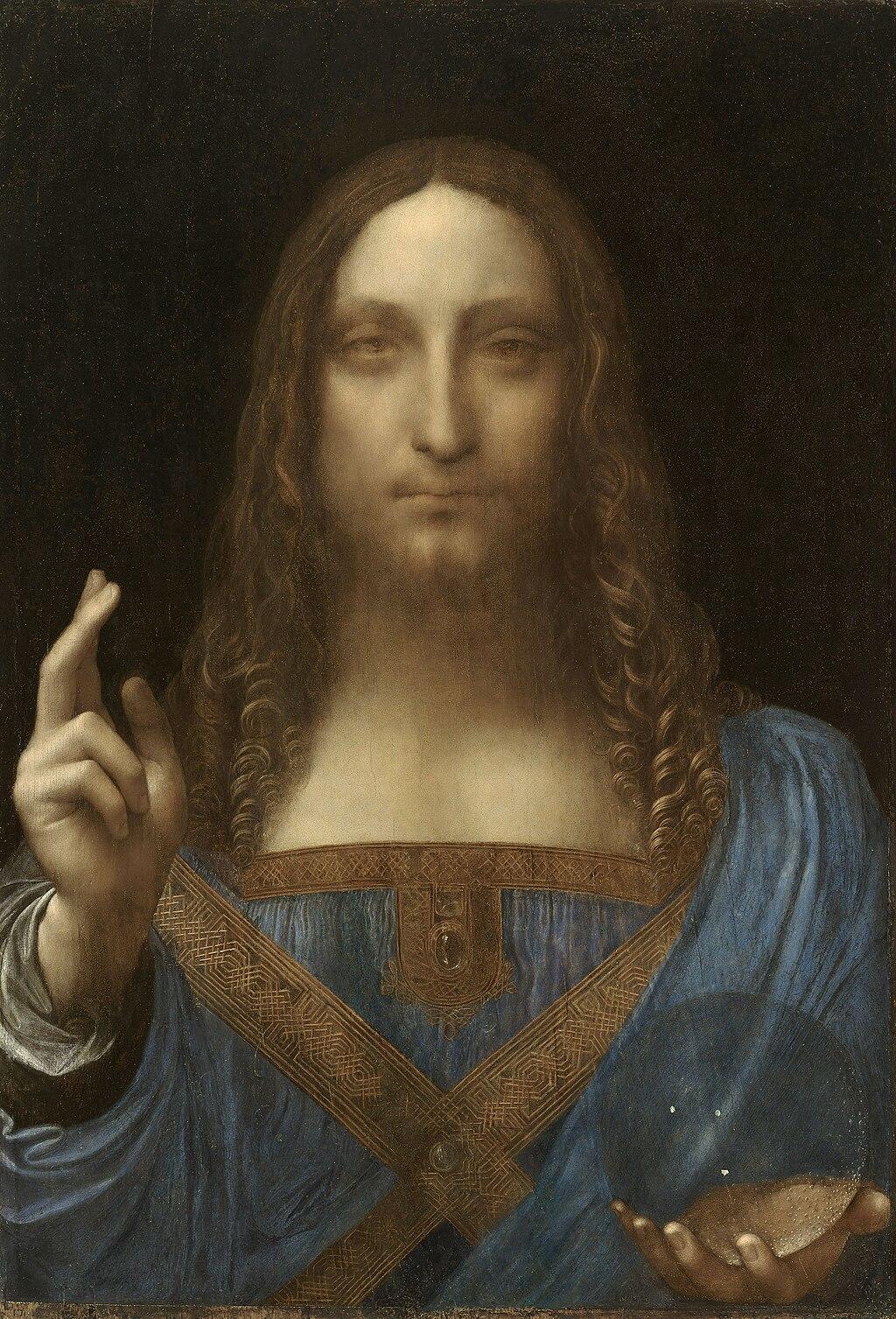
What’s mysterious about the painting is the lack of distortion of the clothing behind the crystal or glass orb in Jesus’ palm. Da Vinci was extremely detail-oriented, and he would have known without even seeing an example that such an orb would cause a visual distortion.
The reason for the lack of distortion is not known. Maybe he thought it would be a distracting visual element detracting from the image, or maybe he wanted to emphasize the holy power of Jesus and the orb and their ability to bend the laws of physics.
Mona Lisa (Italian: Gioconda, Monna Lisa)
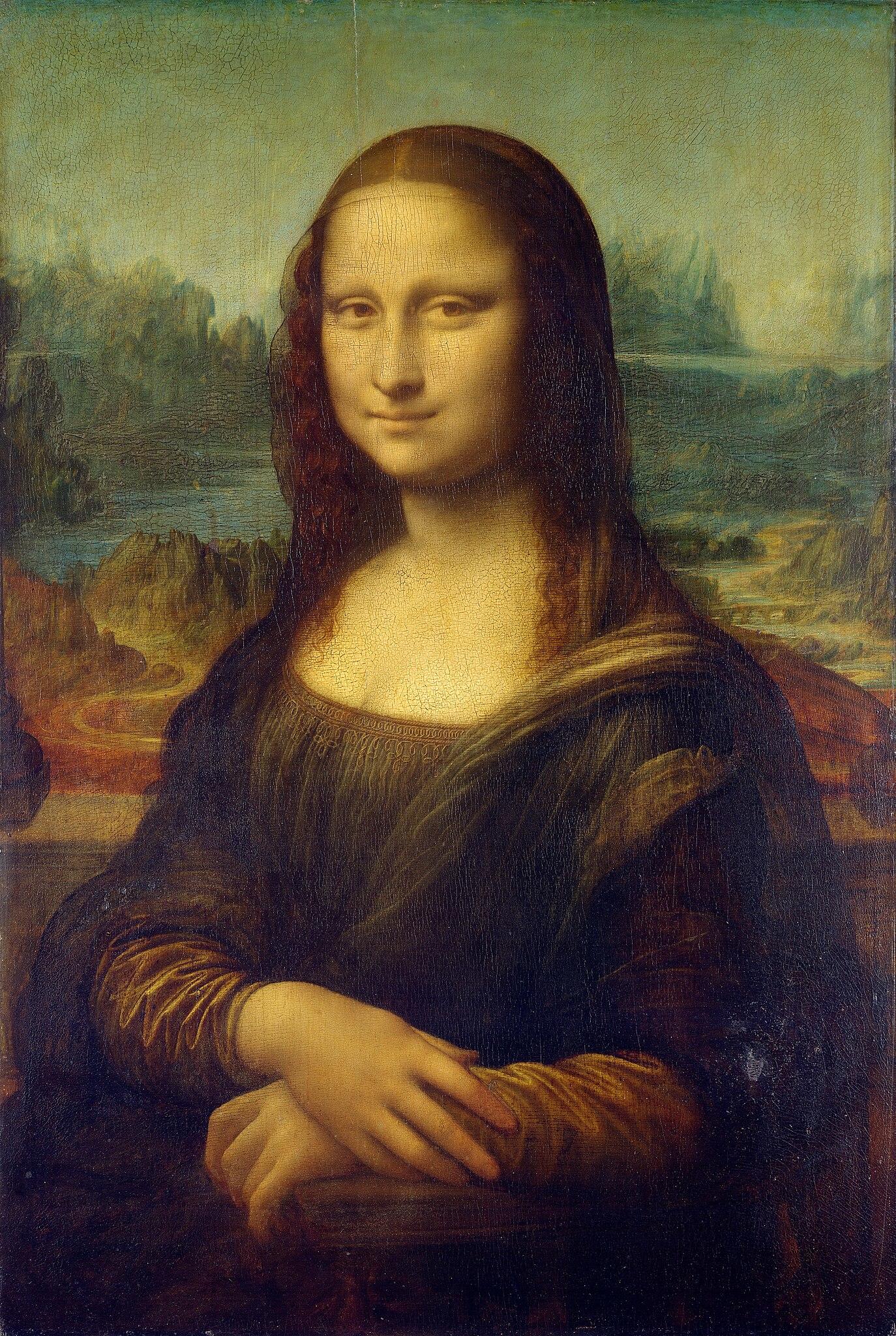
Sfumato creates subtle transitions between light and shadow while chiaroscuro is the technique used by da Vinci to contrast light and dark. This makes the subject lifelike and three-dimensional.
The Mona Lisa is a recognisable cultural icon and has become famous all over the world. The subject herself is enigmatic and draws viewers in with her subtle smile and the potential of some hidden meaning behind it.
The painting is technically considered "priceless" because of its antiquity, authorship, technical skill, and fame, but if it had to have a price tag, it would be around $860 million USD (about $1.32 billion AUD).
The theft and recovery of the Mona Lisa in 1911 and 1913 piqued the world’s interest, sparking the obsession we know today. In fact, when the painting was stolen, none of than Pablo Picasso was questioned as a suspect! Before the infamous heist, Mona Lisa was just another painting!
The portrait is of Lisa del Giocondo, the wife of a wealthy man named Francesco. He commissioned the portrait, although in the end he never received it.
Da Vinci already had several other ongoing projects including painting The Battle of Anghiari (another commission that he didn't finish) and a number of engineering projects. He may have continued working on the portrait until 1519, the year of his death.
Learn to do the same techniques as Da Vinci with painting classes Melbourne on Superprof.
The Battle of Anghiari (Italian: La Battaglia e di Anghiari)
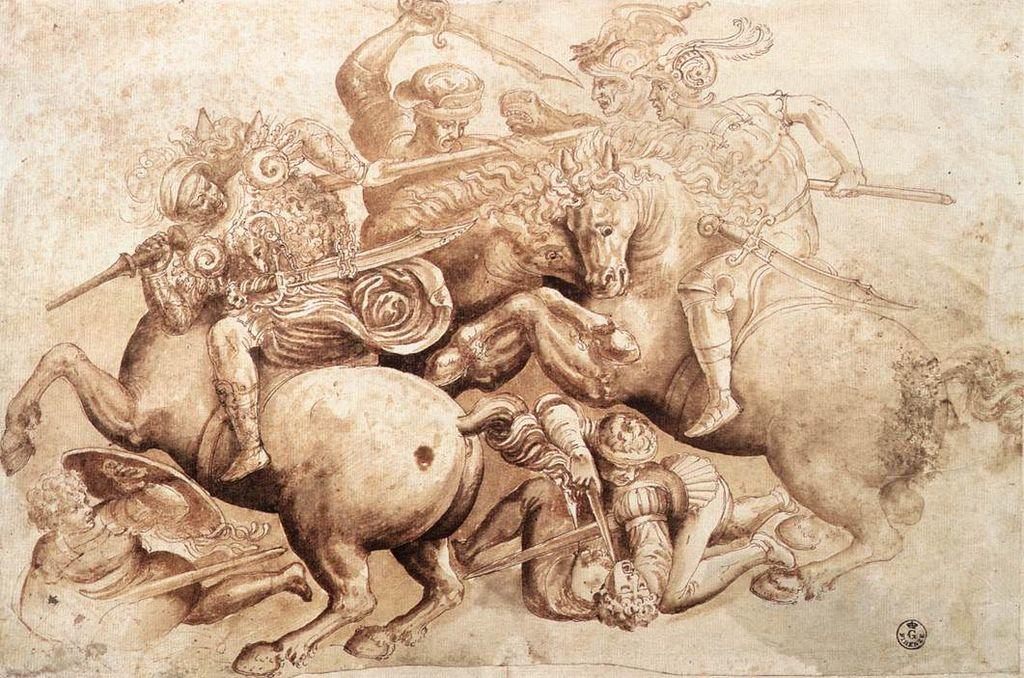
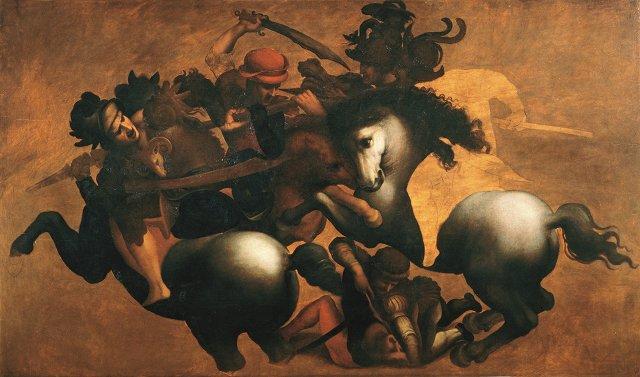
While no one has ever seen the actual original painting since the 16th century, there is some evidence to suggest that the fresco is currently on the original wall in the Salone dei Cinquecento (Hall of the Five Hundred) on the Vecchio Palace. However, it’s never been proven that the painting is actually hiding there.
The reason it’s hidden is because da Vinci was an experimenter, always trying new things, and sometimes the outcomes are not successful. He was experimenting with a new plaster for his fresco, which worked when he made a sample due to ideal drying and setting conditions. But, when he painted the actual wall, the weather was too hot and humid for the plaster to dry properly, and it’s believed that the paint colours even ran down the wall, with sections of the mural being completely destroyed.
Although the dissection of corpses was not allowed by non-physicians in the Renaissance, da Vinci had a thirst for knowledge and details. Breaking the law, he would likely hire grave robbers to exhume recently deceased people and examine their bodies in secret. This is how da Vinci knew so much about human anatomy, and how his paintings were so intricate as to portray the muscles just beneath the skin.
In 1570, Giorgio Vasari was commissioned to paint over the failed fresco with his own masterpiece, The Battle of Marciano in Val di Chiana. But, Vasari was an admirer of da Vinci and would probably not destroy his works, even if they were already partly deteriorated. This is why some art historians believe a second wall was built on top of the old wall, to protect the original painting there. It’s been discovered that there are in fact two walls, with a small gap between them.
However, it’s impossible to unearth the original wall at this time due to funds and not having a way to avoid destroying Vasari’s mural in the process.
Today, all we have of da Vinci’s fresco are drawings showing his intended design and a possible copy of the original unfinished fresco.
The Virgin and Child with Saint Anne (Italian: Sant'Anna, la Vergine, il Bambino e Agnello)

Saint Anne is believed to be the mother of the Virgin Mary, and she holds Mary in her lap as Mary motherly disengages baby Jesus from holding a lamb, which is meant to symbolise his Passion.
It’s believed the composition was first inspired by a commission request from King Louis XII of France following the birth of his daughter in 1499. However, it’s also believed that the painting was commissioned as the high altarpiece for the Church of Santissima Annunziata in Florence.
What’s interesting about this work is that, on the reverse side, three separate study sketches from da Vinci can be found.
Saint John the Baptist (Italian: San Giovanni Battista)
Believed to be da Vinci's final painting (in terms of start date), this painting depicts Saint John in isolation in the wilderness, coming forward perhaps in the night to the viewer and gesturing to the heavens.
This painting is regarded with mixed feelings in the church, as Saint John appears much more soft and feminine than in other representations. It’s speculated that the model could be Giacomo Salai, one of da Vinci’s pupils, who may have also been a lover.

In any case, the sfumato technique and timely Mona Lisa smile point to a classic da Vinci painting.
There are multiple paintings with the same title and similar pose of the Saint, so it’s important to ensure you’re looking at the right painting when you read about it! The other popular image is the 1517 painting, which is a full-body view of Saint John sitting in the wilderness.
Who Was Leonardo da Vinci?
Leonardo da Vinci, (his name meaning Leonardo of/from Vinci), was born on the 14th or 15th of April, 1452. He lived with only his mother when he was born as he was the illegitimate son of a legal notary. His mother, Caterina, raised him but he did start living with his father in 1457.
His father had two wives with whom he had no children, but his third and fourth wives each had multiple children. This meant that Leonardo basically grew up as an only child until the much later addition of half-brothers and sisters. In total, Leonardo had 16 siblings with 11 surviving infancy. The very last sibling was born when Leonardo was as old as 46.
As for Leonardo, there's no record of him ever marrying or having children, and he may or may not have had homosexual romantic relationships. There was very little record of him having any kind of life outside of his work, studies, and art.
This background information is helpful to keep in mind when appreciating his art, and even all of his other work as well. It’s especially interesting that most artists seem to have very dramatic lives, full of emotional highs and lows and romance and intimacy, but da Vinci was more like an engineer who also created art, rather than solely an artist at heart.
Education and Art Schooling
Despite being an illegitimate child, Leonardo received an education. Illegitimate children getting educated was a very uncommon circumstance in those times.
As a young teen, Leonardo was working as a studio boy for a Florentine painter and sculptor and it's even suggested that he posed as a model for several artworks.
He was an apprentice under Andrea del Verrocchio with another aspiring artist known as Botticelli. The apprenticeship would take three years and at the end of it, he became a qualified artist in the Guild of Saint Luke at the age of 20.
Leonardo's father built the young man a workshop, but he preferred to stay with Verrocchio and work there. Leonardo's talents were recognised by many, unlike Paul Cezanne, who struggled to gain recognition during his career.
It’s unknown exactly how many paintings da Vinci completed in his lifetime. Surely there were many in his schooling days for practice, but today there are fewer than 20 surviving paintings that can be attributed to this Renaissance genius. There are a handful of works that may be collaborations with other artists or art students, and some paintings may be student copies of originals that have been lost to time.
Leonardo da Vinci's Working Life
For six years, Leonardo da Vinci worked as a studio artist and was given his first commission in 1479. His second commission was to paint The Adoration of the Magi.
Though da Vinci came from humble beginnings, he never seemed to struggle to find work or commissions, which is quite the opposite of artists like the French impressionist Claude Monet who was born into a wealthy family but spent a long period of his life living in poverty.
Leonardo da Vinci looked to establish himself in Duke Sforza's court in Milan, trying to share his weapons designs and engineering ideas rather than his painting skills. However, his artistic talents were more admired by many.
He ended up staying in Milan for 17 years painting famous works like The Virgin on the Rocks and The Last Supper, which is probably da Vinci's second-most famous painting and perhaps the world's most famous religious painting.
After the duke was overthrown, da Vinci was forced to flee Milan. He went to Venice and worked as an engineer on ways to stop the city from being attacked by sea.
In 1502, he was hired by the son of Pope Alexander VI as a military architect and engineer in Cesena.
There are many different versions of some of da Vinci’s famous paintings. The reason isn’t because others were trying to create counterfeits; instead, it was typical for students in the Renaissance to copy the work of masters and learn techniques that way. Da Vinci was a painting teacher for part of his life, so it was only natural that his students would learn by painting his works!
As he travelled through Italy with his patron, da Vinci made maps and engineered a dam to maintain inland water levels. He was extremely talented, a virtuoso who seemed to excel at everything he tried, but he rarely sought out work as an artist and even left certain commissions unfinished, making it seem that he wasn't ever really that into art.
It’s possible he ran into financial troubles during his life, as evidenced by all the artistic commissions he began (and may or may not have finished). Fortunately, da Vinci still earned money from his oil paintings and had a reputation as one of the best artists during the High Renaissance.
Even if he didn't seem enthused by his art, Leonardo da Vinci did master multiple artistic disciplines, much like the French artist Henri Matisse.

